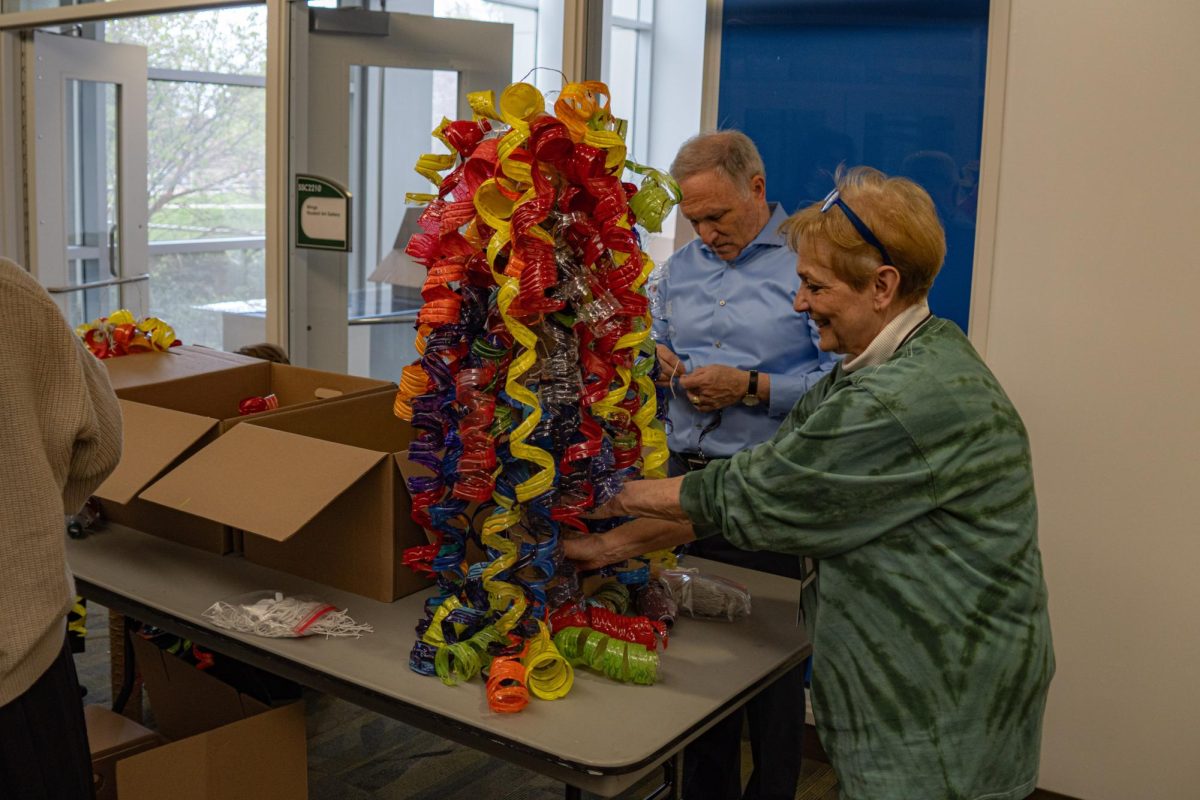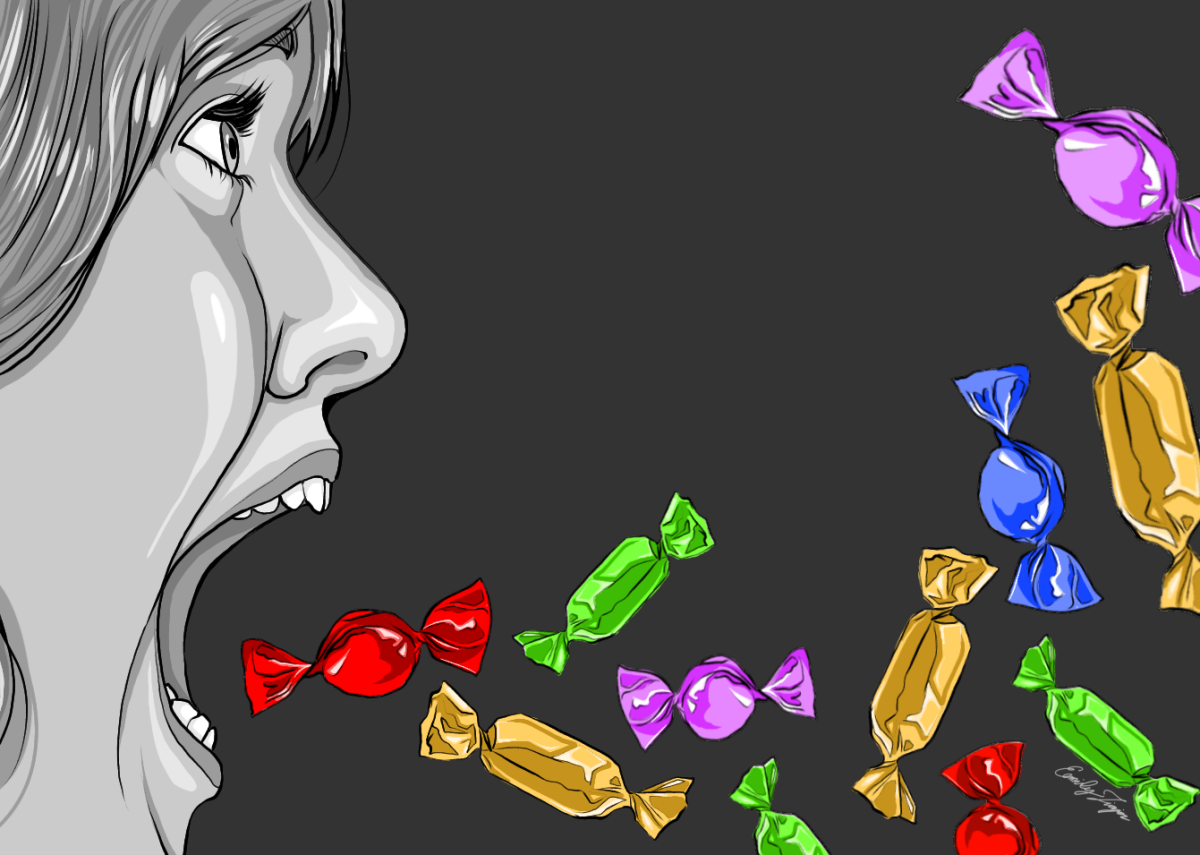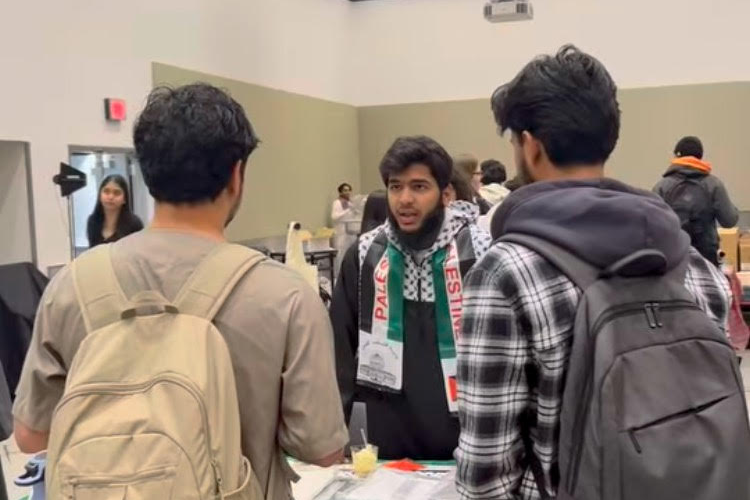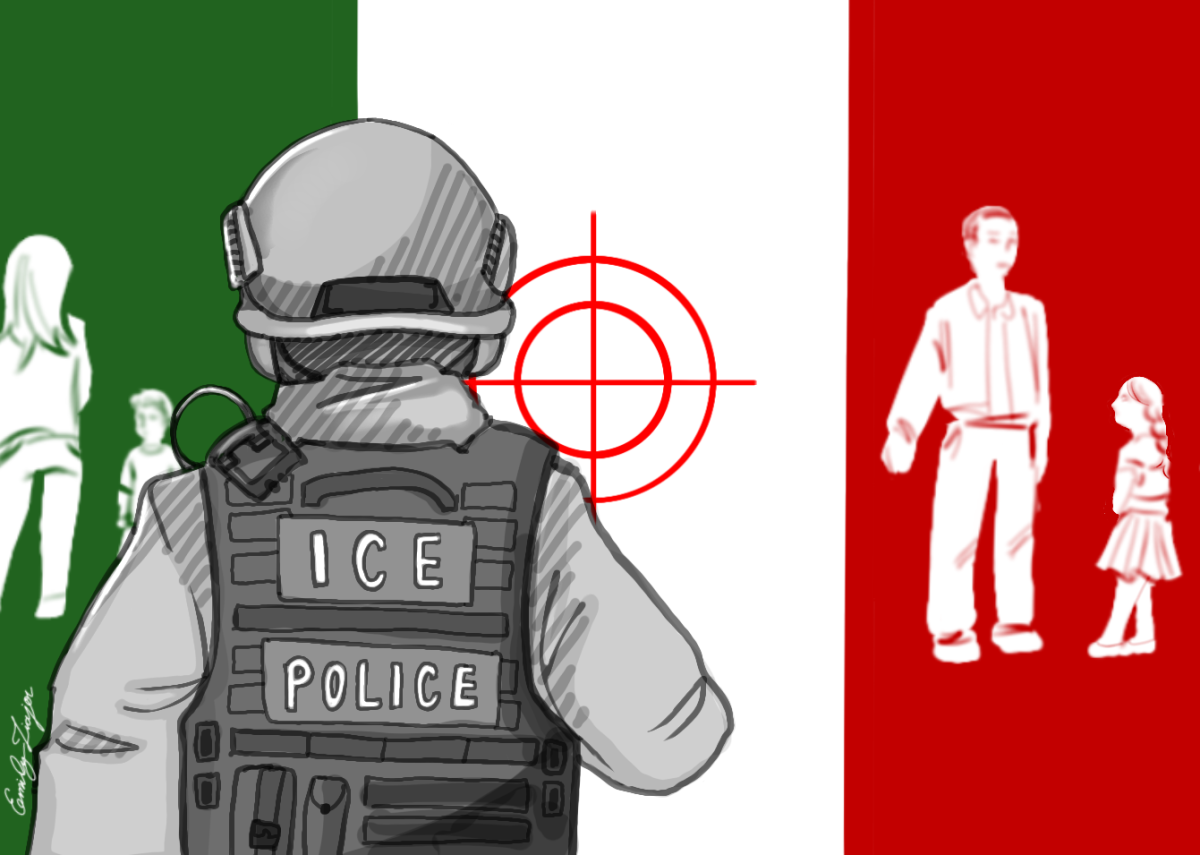An abstract, elegant arrangement of colorful spirals adorned the cylindrical base of the upcycled fixture organized by COD Cares. Hands and plastic ribbons united at Phase III of the Water Bottle Art Project in which students and staff stopped by to help affix painted water bottle ribbons from the previous phase to wire-covered cardboard designed to be suspended from the ceiling.
Joan Di Piero, a community engagement coordinator and manager of COD Cares, said the collaborative, hands-on nature of this particular phase provided an opportunity to COD students to meet new people and socialize.
“Because we’re a commuter school, you don’t have a lot of time to spend on campus and may be running classes or may be running to work,” she said. “So we don’t have time to communicate, and this really is a sense of community. This has all been a learning experience, and that’s part of being in college is meeting different people and learning from them and their experiences.
“You learn more outside the classroom than in the classroom sometimes,” she remarked.
A sign depicting the projected final outcome of the project, reminiscent of artist Dale Chihuly’s abstract glass sculptures meant for ceiling suspension, was displayed on the table next to boxes of the water bottle ribbons. The abstract fixture ultimately created by COD students and community members was adorned with warm-toned ribbons of red, yellow and orange at the top of the base and cool-toned ribbons of blue, violet and green toward the bottom.
Kaden Champagne, a student at College of DuPage, said the prevalent visual appeal of the fixtures, as well as the fun derived from contributing, encourages people to stop by and collaborate.
“This is really fun,” she said. “[Projects like this] bring a lot of people together, and I think multiple people can help make something really pretty and something really unique. ‘One man’s trash is another man’s treasure.’ That’s one saying I really like.”
Cat Pastoor, a Media Outreach Writer at the COD News Bureau, stopped by to help with the project. She noted how the spontaneous nature and tactile challenges of the project’s third phase helped foster camaraderie and collaborative problem-solving.
“Part of [the sense of community] is the spontaneity of it,” she said. “We’re just kind of calling students over as they walk by and engaging them in a project that involves some communication and teamwork and some awkwardness, even because they have to make sure [the cardboard bases] balance. And I think that that’s a pretty good way of connecting with people who you didn’t think you would connect with before.”
Di Piero emphasized the laid-back nature of the collaborative project, noting that there was no such thing as making mistakes during the process.
“I think people realize that nothing is perfect, and we can all make mistakes,” she said. “Because it is seriously ‘no mistakes’ here, just being able to tie it on. It’s like making a meal. It’s like doing a class project. We don’t get to do that as staff, but it’s interesting to see everybody come together.”
Di Piero said the fact that young adults are more aware of the seriousness of climate change and pollution serves as a catalyst for them to unite to work together for a healthier environment.
“The one thing that I believe is that [the younger] generation, the students at COD right now understand [the seriousness of sustainability] way more than people in my age bracket,” Di Piero said. “You’re not as disposable as we have been in the past. You are realizing that your community and the world in general must keep the earth clean for the next generation.”
Champagne spoke of general audiences who will view the fixtures in the future regardless of whether or not they contributed. She said the intriguing medium the project was made from will cause viewers to gravitate towards them. Champagne mentioned seeing similar projects made of metal that surprised her in the past.
“People will think this is either really pretty or they’re gonna be like, ‘What is that?’ “ she said. “And they’ll take a second look, and they’ll be like, ‘Oh my gosh, those are water bottles.’”
Pastoor believes seeing the final outcome of the project will garner a wider appreciation for collaborative art as well as ignite positive memories.
“I think [those who worked on the project] will be more attached to it,” she said. “And also think of the people that they worked with and have a better appreciation for collaborative art in general.”
Di Piero hopes that those who contributed to the project in any way feel belonging and accomplishment when viewing the final fixture on display.
“[I want them to think] ‘I did it,’ “ she said. “A feeling of belonging, a feeling of, ‘I did that. I worked on that,’ and a little bit of pride, because it is cool.”
The final project is available for viewing in the Wings Student Art Gallery in SSC 2210.









